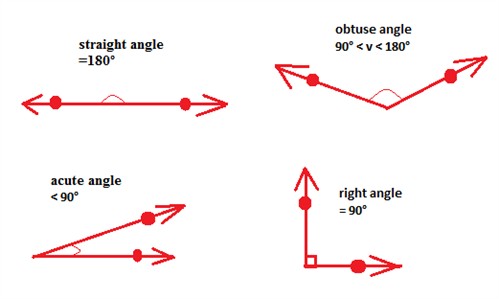The angle formed between the two rays is a vertex and is measured in degrees. We use coordinates to graph and solve equations.

An angle is a fraction of a circle where the whole is 360 degrees. Two angles which together measure 180 are called supplementary. Two angles that when added equals 90 degrees are complementary.
Basics****

Lets us find some angles: Which am I?

Now to recap and make sure we are all in the same:
 An acute angle is a little so small,
An acute angle is a little so small,
Right angle in the corner of a wall,
Obtuse angle at 2:50 in day-time,
Straight angle in a straw in soda-lime!
So many angles all around, even in a mime!
The end
